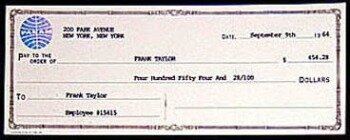-
- 28 Oct
Fully Depreciated Asset Overview, Calculation, Examples

A machine purchased for $15,000 will show up on the balance sheet as Property, Plant and Equipment for $15,000. Over the years the machine decreases in value by the amount of depreciation expense. In the second year, the machine will show up on the balance sheet as $14,000. The tricky part is that the machine doesn’t really decrease in value – until it’s sold.

Learn about accumulated depreciation and different types of asset depreciation in accounting. Accumulated depreciation of an asset is an important financial metric for the business as it reduces a firm’s value on the balance sheet. No, accumulated depreciation is considered a permanent account, since it doesn’t close at the end of the accounting period.
Tax Benefits
This is because land is an asset that does not outgrow its usefulness over time. When we find the total of the depreciated expense of the asset after each year, the answer we arrive at is what is the accumulated depreciation of the asset. The formula for calculating the accumulated depreciation on a fixed asset (PP&E) is as follows. The concept of depreciation describes the allocation of the purchase of a fixed asset, or capital expenditure, over its useful life. Proration considers the accounting period that an asset had depreciated over based on when you bought the asset.
2023-08-02 NDAQ:HWKN Press Release Hawkins Inc – Stockhouse Publishing
2023-08-02 NDAQ:HWKN Press Release Hawkins Inc.
Posted: Wed, 02 Aug 2023 20:11:35 GMT [source]
Although it is not an asset itself, it plays a vital role in financial reporting and tax considerations. By understanding accumulated depreciation and its impact on the balance sheet, businesses can make informed decisions about asset management, budgeting, and financial planning. If the payroll conversion specialist jobs, employment asset is still used in the company’s operations, the asset’s account and accumulated depreciation will still be reported on the company’s balance sheet. The reported asset’s value and accumulated depreciation will be equal, but no entry will be required until the asset is disposed of.
What type of assets do we calculate accumulated depreciation for?
In reality, the company would record a gradual reduction in these computers’ value over time—their accumulated depreciation—until that value eventually reached zero. So to find the accumulated depreciation AD, we need to sum the total depreciation expense from each year. Are you an accountant looking to calculate the accumulated depreciated value of the company’s vehicle? Or is it the machine used to manufacture the toys that you wish to find the total depreciated value of?
However, accumulated depreciation increases by that amount until the asset is fully depreciated in year ten. The accumulated depreciation for Year 1 of the asset’s ten-year life is $9,500. Since we are using straight-line depreciation, $9,500 will be the depreciation for each year. However, the accumulated depreciation is shown in the following table since it is the sum of the asset’s depreciation. Business owners can claim a valuable tax deduction if they keep track of the accumulated depreciation of their eligible assets. This accumulated depreciation is purely an estimate, however, there’s no actual cash transaction going on.
Depreciation expense is a portion of the capitalized cost of an organization’s fixed assets that are charged to expense in a reporting period. It is recorded with a debit to the depreciation expense account and a credit to the accumulated depreciation contra asset account. Another difference is that the depreciation expense for an asset is halted when the asset is sold, while accumulated depreciation is reversed when the asset is sold. The accumulated depreciation account is a contra asset account on a company’s balance sheet. Accumulated depreciation specifies the total amount of an asset’s wear to date in the asset’s useful life.
Why is Accumulated Depreciation an asset account?
Let’s assume that, in this instance, we wish to calculate the accumulated depreciation after 3 years. The estimated life of the machine is 15 years, and its salvage value is $3,000. Say that five years ago, you dedicated a room in your home to create a home office.
- It is an allocation method used to reflect the gradual decrease in an asset’s value due to wear and tear, obsolescence, or other factors.
- For each of the ten years of the useful life of the asset, depreciation will be the same since we are using straight-line depreciation.
- Depreciation is the method of accounting used to allocate the cost of a fixed asset over its useful life and is used to account for declines in value.
- The philosophy behind accelerated depreciation is assets that are newer (i.e. a new company vehicle) are often used more than older assets because they are in better condition and more efficient.
- All methods seek to split the cost of an asset throughout its useful life.
Accumulated Depreciation is an accounting concept that tracks the total depreciation expense charged to an asset since the time it was acquired. Depreciation is the process of spreading the cost of a tangible asset over its useful life. It is an allocation method used to reflect the gradual decrease in an asset’s value due to wear and tear, obsolescence, or other factors. You should understand the value of assets and know how to avoid incurring losses and making bad decisions in the future. Whether you’re a business owner or work in accounting, you’ll want to know how to value and report assets and purchases. Accumulated depreciation is typically recorded as a credit entry, to offset its corresponding asset account.
Accumulated depreciation vs. depreciation expense
The accumulated depreciation balance increases over time, adding the amount of depreciation expense recorded in the current period. Each year the contra asset account referred to as accumulated depreciation increases by $10,000. For example, at the end of five years, the annual depreciation expense is still $10,000, but accumulated depreciation has grown to $50,000. It is credited each year as the value of the asset is written off and remains on the books, reducing the net value of the asset, until the asset is disposed of or sold. It is important to note that accumulated depreciation cannot be more than the asset’s historical cost even if the asset is still in use after its estimated useful life. In conclusion, accumulated depreciation is a crucial accounting concept that reflects the reduction in the book value of a tangible asset over time.
Westwood Holdings Group, Inc. Reports Second Quarter 2023 Results – EIN News
Westwood Holdings Group, Inc. Reports Second Quarter 2023 Results.
Posted: Wed, 02 Aug 2023 20:05:00 GMT [source]
In accrual accounting, the “Accumulated Depreciation” on a fixed asset refers to the sum of all depreciation expenses since the date of original purchase. Accumulated depreciation affects the balance sheet by reducing the carrying value of assets. It also impacts the income statement as a component of depreciation expense, which reduces the reported net income. As you learn about accounting, you’ll discover different ways to calculate accumulated depreciation. All methods seek to split the cost of an asset throughout its useful life. The standard methods are the straight-line method, the declining method, and the double-declining method.
Watch this short video to quickly understand the main concepts covered in this guide, including what accumulated depreciation is and how depreciation expenses are calculated. A commonly practiced strategy for depreciating an asset is to recognize a half year of depreciation in the year an asset is acquired and a half year of depreciation in the last year of an asset’s useful life. This strategy is employed to more fairly allocate depreciation expense and accumulated depreciation in years when an asset may only be used part of a year. After two years, the company realizes the remaining useful life is not three years but instead six years. Under GAAP, the company does not need to retroactively adjust financial statements for changes in estimates.

Any gain or loss above the book value, or carrying value, is recorded according to specific accounting rules depending on the situation as previously demonstrated in the delivery van illustration. Regardless of size, all businesses rely on capital asset accounts like buildings, vehicles, equipment, etc., as part of their daily operations. They must comply with accounting rules to depreciate these assets over their useful lives to present an accurate outlook of their business and asset’s cost to stakeholders and investors.
On the income statement, the operating profit is likely to increase because the depreciation expense will no longer be recorded on the income statement. Accumulated depreciation is an asset account with a credit balance known as a long-term contra asset account that is reported on the balance sheet under the heading Property, Plant and Equipment. The amount of a long-term asset’s cost that has been allocated, since the time that the asset was acquired. Accumulated depreciation is calculated using several different accounting methods.

In order to calculate the depreciation expense, which will reduce the PP&E’s carrying value each year, the useful life and salvage value assumptions are necessary. Alternatively, the accumulated expense can also be calculated by taking the sum of all historical depreciation expense incurred to date, assuming the depreciation schedule is readily available. A contra asset is defined as an asset account that offsets the asset account to which it is paired, i.e. the reverse of the standard impact on the books. The purpose of accumulated depreciation is to show the reduction in the book value of the asset over time. For each of the ten years of the useful life of the asset, depreciation will be the same since we are using straight-line depreciation.

